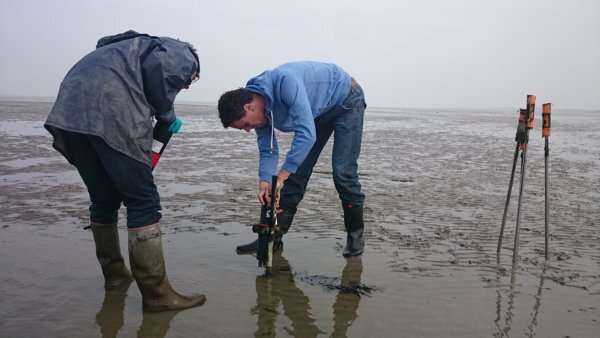Sustainable coastal protection through a combination of salt marshes and dykes

According to University of Twente Ph.D. candidate Pim Willemsen, natural salt marshes can help to improve the strength and sustainability of traditional coastal defenses. These ecosystems will expand as sea levels rise and dampen both small and large waves, thus reducing the impact on traditional coastal protection such as dykes and sea walls. Pim Willemsen will defend his thesis on this subject this Friday.
Seventy percent of the world's megacities (cities with more than 1.6 million inhabitants) are located in the coastal zone. The anticipated rise in sea levels and more frequent extreme weather events make it all the more essential to protect these areas against the sea. This is traditionally done with dykes and sea walls, but, according to Willemsen, these defenses can be made even more effective and sustainable if salt marshes can develop in front of them. "These tidal marshes and the vegetation they support will make these coastal defenses more sustainable," says Willemsen.
Keeping pace with rising sea levels
Because they will be able to keep pace with rising sea levels, both natural and artificially created salt marshes could contribute to sustainable coastal protection. "As the sea level rises, it deposits more sand and silt on the salt marsh, causing it to expand at the same pace as the sea level rises," explains Willemsen. "The salt marshes in turn dampen the incoming waves, even as the sea level continues to rise." For his Ph.D. research, Willemsen studied the effectiveness and predictability of wave attenuation by salt marshes during the average lifetime of traditional coastal defenses (around 50 years).
Model and field measurements
To be able to predict the width of a salt marsh over this period of 50 years, Willemsen developed a computer model with which he could vary the average wave height and the amount of available sediment in the water. The results of his model corresponded with what he observed on old maps and photographs of salt marshes, and with his measurements of waves in existing salt marshes. The model predicts if the edge of a salt marsh will expand seawards or in fact shrink landwards and how this will affect the wave attenuation capacity of the marsh.
Pim Willemsen will defend his thesis, titled "Biogeomorphology Of Salt Marshes—Understanding The Decadal Salt Marsh Dynamics For Flood Defence," on Friday 22 January 2021.
Provided by University of Twente




















